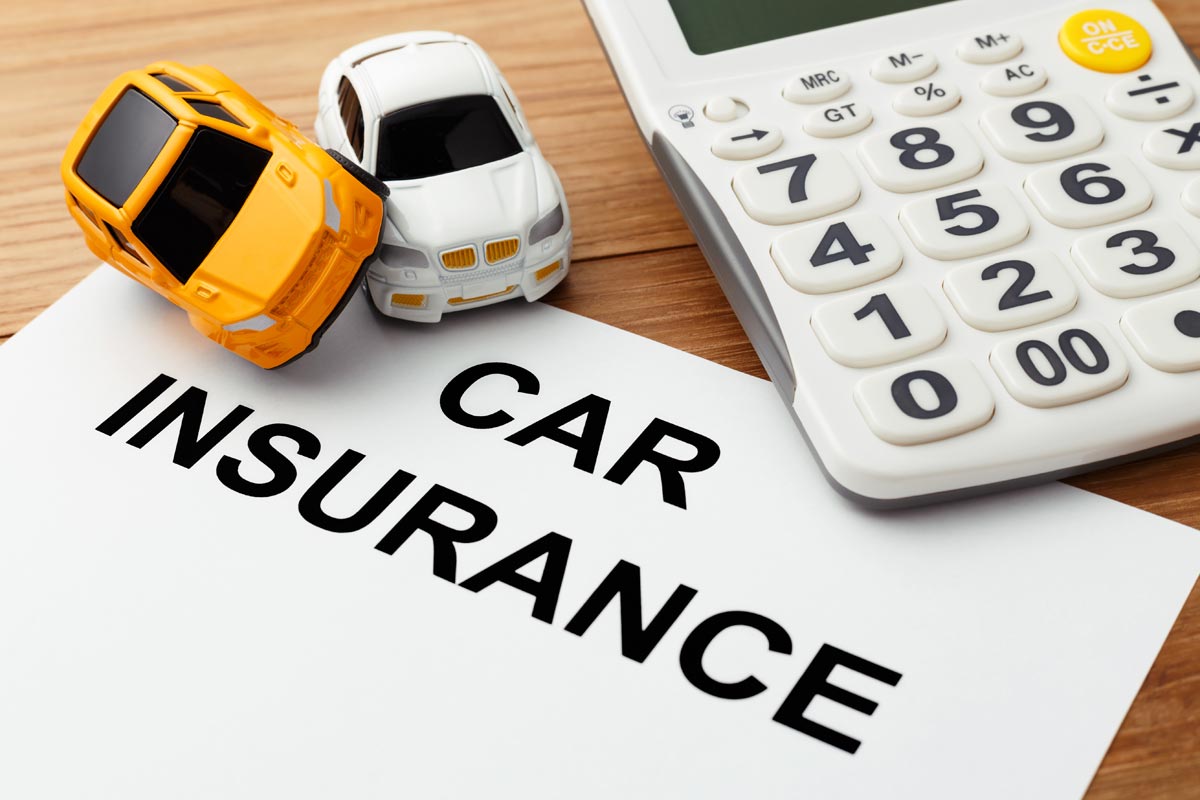Car insurance is an indispensable part of modern vehicle ownership. It not only protects you financially but also provides a safety net for unforeseen events such as accidents, theft, or natural disasters. Understanding car insurance is crucial whether you are a new driver or a seasoned motorist. This comprehensive guide covers everything you need to know about car insurance from its basic concepts to the various types of coverage, the factors that affect your premiums, and strategies for lowering costs. By the end of this guide, you will be well-equipped to make informed decisions about your car insurance policy and ensure that you are adequately protected on the road.
What is Car Insurance?

Car insurance is a legally binding contract between a vehicle owner (the policyholder) and an insurance company. Under this contract, the insurer agrees to cover certain financial losses incurred from car-related incidents in exchange for regular premium payments. These incidents can include collisions, theft, vandalism, natural disasters, and more. Car insurance is designed to mitigate the financial burden associated with vehicle damage, medical expenses, and liability claims. The policy specifies the conditions, coverage limits, and exclusions, ensuring that both parties are aware of their responsibilities.
The essence of car insurance is risk management. By transferring some of the financial risks from the policyholder to the insurer, car insurance provides peace of mind and protects you from potentially catastrophic financial losses that could arise from unexpected events on the road.
Why is Car Insurance Important?
Car insurance plays a pivotal role in ensuring your financial security and legal compliance. Its importance is underscored by several key points:
- Legal Requirement: In many regions, car insurance is not optional it is a legal requirement. Driving without valid insurance can result in heavy fines, license suspensions, and even jail time.
- Financial Protection: Accidents can result in significant expenses, including vehicle repairs, medical bills, and legal costs. Insurance helps cover these expenses, protecting your savings and financial well-being.
- Liability Coverage: If you are at fault in an accident, liability coverage protects you from lawsuits and claims arising from bodily injuries or property damage inflicted on others.
- Peace of Mind: Knowing that you are financially protected in case of an accident allows you to drive confidently, reducing the stress associated with the uncertainties of the road.
Types of Car Insurance Coverage
Car insurance policies offer a variety of coverage options, each designed to address different risks. Understanding the differences between these coverages can help you tailor your policy to suit your individual needs.
Liability Insurance
Liability insurance is the foundation of any car insurance policy and is legally mandated in most jurisdictions. This coverage is split into two main components:
Bodily Injury Liability
This portion of the policy covers:
- Medical Expenses: Costs related to treating injuries sustained by others in an accident for which you are at fault.
- Lost Wages: Compensation for the income lost by the injured party.
- Legal Fees: Costs associated with defending against lawsuits resulting from the accident.
Property Damage Liability
This component addresses:
- Vehicle Damage: Repairs or replacement of other vehicles damaged in an accident.
- Property Damage: Costs incurred when other property (such as buildings, fences, or street signs) is damaged.
Liability insurance does not cover your own vehicle or injuries—it is solely focused on protecting other people and their property from the financial repercussions of an accident you cause.
Collision Insurance
Collision insurance covers the costs associated with repairing or replacing your vehicle after a collision, regardless of who is at fault. This coverage is particularly important for newer or high-value vehicles where repair or replacement costs can be very high. In cases where your vehicle is declared a total loss, collision coverage typically pays the actual cash value of the car minus the deductible.
Comprehensive Insurance
While collision insurance deals with incidents involving other vehicles or objects, comprehensive insurance covers a wider range of risks. This includes:
- Theft: Protection if your vehicle is stolen.
- Vandalism: Coverage for damages resulting from deliberate acts of vandalism.
- Natural Disasters: Compensation for damage from floods, hurricanes, earthquakes, and other natural events.
- Animal Collisions: Costs associated with accidents involving animals, such as hitting a deer.
- Falling Objects: Protection against damage from objects that fall on your vehicle.
Comprehensive insurance is an essential supplement to collision coverage, providing broader protection for various non-collision-related risks.
Uninsured/Underinsured Motorist Coverage
In the unfortunate event that you are involved in an accident with a driver who either does not have insurance or does not have enough insurance to cover the damages, uninsured/underinsured motorist (UM/UIM) coverage steps in. This type of coverage ensures that your medical bills and vehicle repair costs are covered even if the at-fault party is inadequately insured. It is a critical component for protecting yourself in an environment where not all drivers maintain sufficient insurance.
Personal Injury Protection (PIP)
Also known as no-fault insurance in some regions, Personal Injury Protection (PIP) covers the medical expenses and, in some cases, other related costs (such as lost wages or rehabilitation) for you and your passengers regardless of who is at fault. PIP is especially valuable in states or countries with no-fault insurance laws, where each party’s own insurance is used to cover their injuries following an accident.
Factors Affecting Car Insurance Premiums
-A safe driving record is one of the most significant factors in lowering your insurance premium. Insurers view drivers with multiple accidents or traffic violations as high-risk, which leads to higher premiums. Conversely, maintaining a clean driving record can help you secure better rates and qualify for safe-driver discounts.
-Younger, less experienced drivers typically face higher premiums due to the statistically higher risk of accidents. As drivers age and gain more experience, insurance rates often decrease. Insurers generally reward long-term safe driving with lower premiums as your risk profile improves over time.
-The make and model of your vehicle significantly influence your insurance costs. Luxury cars and high-performance vehicles are usually more expensive to insure because they cost more to repair or replace. On the other hand, vehicles with high safety ratings and advanced anti-theft features tend to attract lower premiums, as they present a lower risk to insurers.
-Where you live matters when it comes to car insurance. Urban areas, characterized by higher traffic density and increased rates of accidents and theft, typically result in higher premiums. Conversely, rural areas with fewer vehicles on the road may enjoy lower insurance rates. Insurers also consider local crime statistics and accident frequency when setting your premium.
-In many regions, your credit score is used as a measure of financial responsibility. A higher credit score can result in lower insurance premiums, as it is often associated with lower risk. Conversely, a poor credit history may lead to higher premiums, as insurers interpret this as an indicator of higher risk.
Additional Factors Affecting Premiums
Beyond the major factors listed above, several other elements can impact your premium:
- Marital Status: Married drivers are often considered less risky, resulting in lower premiums.
- Annual Mileage: The more you drive, the higher your risk of being involved in an accident, which can increase your premium.
- Employment Status and Occupation: Certain jobs or professions may have different risk profiles that influence premium costs.
- Education Level: In some cases, insurers use educational attainment as an indicator of risk.
- Vehicle Usage: How you use your car—whether for commuting, business, or leisure—can affect your premium. Business use or long commutes typically result in higher rates.
Tips to Lower Car Insurance Costs

-One of the simplest and most effective ways to lower your insurance costs is to shop around. Different insurers assess risk differently, so obtaining multiple quotes can help you find the best rate. Utilize online comparison tools and aggregator websites to easily compare policies from various providers.
-Many insurance companies offer discounts if you bundle your car insurance with other types of coverage, such as homeowners or renters insurance. Bundling not only simplifies your insurance management but also provides cost savings through multi-policy discounts.
-A spotless driving record is one of the best ways to secure lower premiums. Safe driving practices reduce the likelihood of accidents and make you eligible for safe-driver discounts. Regularly review your driving habits, adhere strictly to traffic laws, and avoid any violations to maintain a favorable record.
-Enrolling in a certified defensive driving course can significantly lower your insurance rates. Many insurers offer discounts to drivers who complete these courses, as they demonstrate a commitment to safe driving and reduce the risk of accidents. Defensive driving courses not only help lower your premiums but also improve your overall driving skills.
-If you are financially capable of absorbing a higher out-of-pocket expense in the event of a claim, consider increasing your deductible. A higher deductible can lead to lower monthly premiums. However, ensure that the deductible amount is something you can realistically pay if an accident occurs.
-Advancements in technology have given rise to telematics and usage-based insurance programs. These programs track your driving behavior through devices or mobile apps, monitoring aspects like speed, braking habits, and mileage. Insurers then adjust your premium based on your driving patterns. Responsible drivers who demonstrate safe driving habits can benefit from significant discounts under these programs.
Common Car Insurance Myths
There are several myths and misconceptions surrounding car insurance. Dispelling these myths is essential to making informed decisions:
- Myth: Red Cars Cost More to Insure.
Fact: The color of your vehicle does not impact your insurance premium. Instead, insurers consider factors like the car’s make, model, safety features, and overall risk profile. - Myth: Minimum Coverage is Always Sufficient.
Fact: While state-mandated minimum coverage meets legal requirements, it may not adequately protect you in the event of a serious accident. Additional coverage can help avoid significant out-of-pocket expenses. - Myth: Insurance Covers Everything.
Fact: Standard policies come with limitations and exclusions. It is important to thoroughly review your policy and understand exactly what is covered and what is not.
Legal Aspects of Car Insurance
Car insurance is governed by a complex framework of laws and regulations that vary by jurisdiction. It is essential to understand these legal requirements to ensure compliance and avoid penalties. Failing to maintain the legally mandated minimum coverage can lead to fines, license suspensions, or even criminal charges in severe cases. Additionally, being well-versed in the legal aspects of your policy can help you navigate disputes and claims more effectively.
Every insurance policy includes detailed terms and conditions that outline the scope of coverage, exclusions, deductibles, and the claims process. It is critical to read and comprehend these terms so that you know exactly what protections you have. This understanding can prevent unpleasant surprises during the claims process and ensure that you are aware of any gaps in coverage that may need to be addressed through additional endorsements or riders.
The Claims Process
Filing a claim can be one of the most stressful experiences following an accident. Understanding the steps involved in the claims process can help reduce anxiety and streamline the process.
How to File a Claim
- Immediate Notification: Contact your insurance provider as soon as possible after an incident. Many companies offer multiple channels for claims, including online portals, mobile apps, and phone services.
- Documentation: Prepare and submit all necessary documentation, including photographs of the damage, police reports, repair estimates, and any other relevant evidence.
- Communication: Stay in regular contact with your claims adjuster. Clear communication helps ensure that your claim is processed efficiently.
What to Expect During a Claim
Once your claim is filed, an insurance adjuster will be assigned to evaluate the incident. The adjuster may inspect your vehicle, interview involved parties, and review submitted documentation. Based on these findings, the adjuster determines the payout amount, which is then processed according to your policy terms. Being proactive and maintaining detailed records can help facilitate a smoother claims process.
The Future of Car Insurance
The car insurance industry is undergoing rapid transformation due to technological advancements, evolving regulatory frameworks, and changing consumer behaviors. Staying informed about these changes is critical for adapting your coverage to meet future needs.
-Innovations in data analytics, artificial intelligence, and mobile technology are reshaping the insurance landscape. Insurers are now able to more accurately assess risk and personalize premiums based on real-time data. These technological advancements are not only streamlining the claims process but also offering more tailored insurance products to consumers.
-Usage-based insurance (UBI) is becoming increasingly popular as it ties premiums directly to driving behavior. With telematics and smartphone applications, insurers can monitor factors such as speed, braking, and mileage. This model rewards safe driving with lower premiums and encourages more responsible behavior behind the wheel.
-The advent of autonomous and semi-autonomous vehicles is poised to disrupt traditional car insurance models. With improved safety features and reduced human error, the frequency and severity of accidents are expected to decline. However, this shift also raises questions about liability and risk assessment, leading insurers to reevaluate their policies and coverage models for a rapidly changing market.
-Environmental changes, such as the increasing frequency of severe weather events due to climate change, can influence car insurance premiums. Economic factors, including repair costs and the availability of replacement parts, also play a role. It is important to remain aware of these broader trends as they may affect your insurance rates over time.
Conclusion
In conclusion, understanding car insurance is essential for protecting your financial well-being and ensuring legal compliance. This comprehensive guide has explored the fundamental aspects of car insurance—from the definition and importance of insurance to the various types of coverage available. We have examined the factors that affect your premiums, provided practical tips for lowering costs, debunked common myths, and outlined the claims process in detail.
By staying informed and actively managing your insurance policy, you can secure the right coverage that meets your specific needs and budget. Car insurance is not merely a legal obligation—it is an investment in your peace of mind, offering protection against the uncertainties of life on the road. As the industry continues to evolve with technological advancements and changing economic landscapes, the importance of a well-structured insurance policy only grows.
Keep in mind that your insurance needs may change over time, and it is advisable to review your policy periodically. Whether you are a new driver or an experienced motorist, making informed decisions about your car insurance can save you significant amounts of money and help you avoid financial hardships following an accident.
Remember that knowledge is power when it comes to navigating the complexities of car insurance. Use the insights from this guide to ask informed questions, seek competitive quotes, and understand the fine print of your policy. In doing so, you will not only comply with legal requirements but also secure a financial safety net that supports you in times of need.



